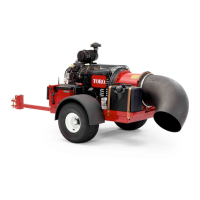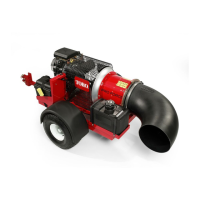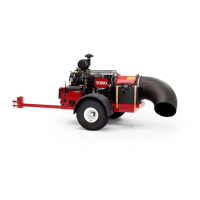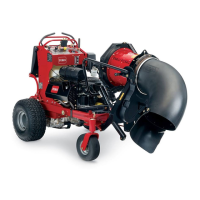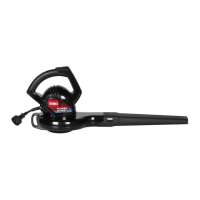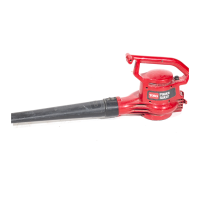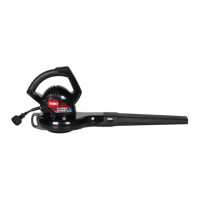What to do if my Toro Pro Force 44553 ETR dropped due to low oil?
- MmayojessicaAug 15, 2025
If the ETR dropped due to low oil, first check the oil pressure. If the issue continues, inspect the oil pressure switch.
What to do if my Toro Pro Force 44553 ETR dropped due to low oil?
If the ETR dropped due to low oil, first check the oil pressure. If the issue continues, inspect the oil pressure switch.
Why did I lost communication with Toro Pro Force 44553 BASE?
A loss of communication with the BASE could be due to a few reasons. First, check the harness connector to make sure it is properly connected. If the connection is good, there may be a wiring issue or a problem with the BASE itself, in which case you should contact your Toro Distributor.
What to do if my Toro Pro Force 44553 ETR dropped due to low voltage?
If the ETR dropped because of low voltage, the voltage regulator or alternator might be faulty. Contact your Toro Distributor for assistance.
How to fix version incompatibility of the BASE and/or HH of my Toro Pro Force 44553 Blower?
Version incompatibility usually means you have the wrong software. To resolve this, install the correct software from TORODIAG. Contact your Toro Distributor for assistance.
What to do if the energize to run (ETR) circuit was interrupted because of low machine battery voltage on my Toro Blower?
If the energize to run (ETR) circuit was interrupted because of low machine battery voltage (less than 5.5 V), first check the battery cable condition and ensure the cable hardware is tight. Next, test the battery and charge it if needed. If the issue persists, replace the battery. You may also need to test the engine alternator or the engine voltage regulator/rectifier, and replace them if necessary.
What to do if the energize to run (ETR) circuit was interrupted because of low oil pressure on my Toro Blower?
If the energize to run (ETR) circuit was interrupted because of low oil pressure (for 10 seconds or longer), check the engine-oil level and adjust it as necessary. If the issue continues, the engine oil pressure switch or the wire harness may be damaged. In this case, contact your authorized Toro distributor.
Why is the wrong handheld remote associated with the wireless-control module on my Toro Blower?
The handheld remote may be associated with a different Pro Force machine or it may be from the wrong type of machine.
What to do if the software version in the TEC, wireless-control module, or handheld remote is incompatible with one of these other components in my Toro Pro Force 44553?
If the software version in the TEC, wireless-control module, or handheld remote is incompatible, associate the handheld remote. Refer to the machine Operator’s Manual. If this does not resolve the issue, install the correct software by contacting your authorized Toro distributor.
Why the TEC controller or the wireless-control module cannot communicate on my Toro Blower?
The wire-harness connector at the TEC controller or the wireless-control module might be loose, corroded, or damaged. Also, the wire harness or the wireless-control module could be damaged. In such cases, contact your authorized Toro distributor.
Device complies with FCC Part 15 rules for interference.
Warning about chemicals in exhaust and battery components.
Describes the debris blower's purpose and application.
Emphasizes reading for safe operation and maintenance.
Mentions QR code for warranty, parts, and product details.
Essential safety rules for operating the debris blower.
Explains safety symbols and their meaning for injury prevention.
Identifies and explains the purpose of safety decals on the machine.
Information regarding spark arresters and fire prevention.
Identifies and describes the purpose of each button on the remote.
Details the sequence for starting the engine via the remote.
Checklist to confirm all parts received.
Step-by-step guide for battery installation.
Detailed instructions for attaching the hitch to the machine.
Steps for hitching the machine to a towing vehicle.
Guide to inserting batteries into the remote control.
Explains engine stop, start, speed, and nozzle direction controls.
Details the functions of the main ignition switch.
Explains choke operation and the hour meter function.
Describes the diagnostic light for system fault indication.
Critical safety guidelines before starting operation.
Rules and precautions for safe refueling.
Detailed steps for securing the trailer hitch.
Instructions on fuel type and filling procedure.
Guidelines for safe operation, including handling debris and bystanders.
Specific safety rules for working on inclines.
Explains startup, broken communication, and active fault codes.
Caution regarding moving parts during engine start.
Detailed steps required before pressing the start button.
Procedure for stopping the engine using the remote.
How to activate, use, and manage the remote control.
How to turn the optional lights on or off.
Using the remote to control nozzle orientation.
Precautions when transporting the machine.
Understanding the nozzle position gauge and alignment.
General safety checks after use.
Guidelines for safe towing and connecting.
Critical safety rules before performing any maintenance.
Lists recommended maintenance tasks by service interval.
Routine checks to perform each day.
Essential steps before commencing maintenance.
Safety rules specific to engine servicing.
Instructions for inspecting and cleaning the air filter.
Steps to replace the air filter element.
Steps to replace the carbon canister purge-line filter.
How to check and maintain proper oil level.
Step-by-step guide to changing the oil.
Instructions for replacing the oil filter.
Guide to inspecting, gapping, and installing spark plugs.
How to clean engine screen and oil cooler.
Steps for replacing the fuel filter.
Procedures for draining and servicing the fuel tank.
Safety rules for working with electrical components.
Location and procedure for replacing fuses.
Checking tire pressure and condition.
Procedure for torquing wheel lug nuts.
Procedure for setting belt tension.
Ensuring the nozzle clamp is tight.
How to clean nozzle guides for free rotation.
Steps to link the remote to the control module.
Detailed steps for changing batteries in the handheld remote.
Procedures for entering diagnostic mode and resolving codes.
Guide to diagnostic light patterns and their meanings.
Steps to access and view fault codes.
Procedure for clearing active fault codes.
Steps to return from diagnostic mode.
Safe cleaning methods and environmental disposal.
Safety guidelines before and during storage.
Steps for long-term storage.
Explanation of the law and warning significance.
Toro's reasons for including Prop 65 warnings.
Details of what the warranty covers and general conditions.
Procedures for service and owner obligations.
Items and conditions not covered by the warranty.


